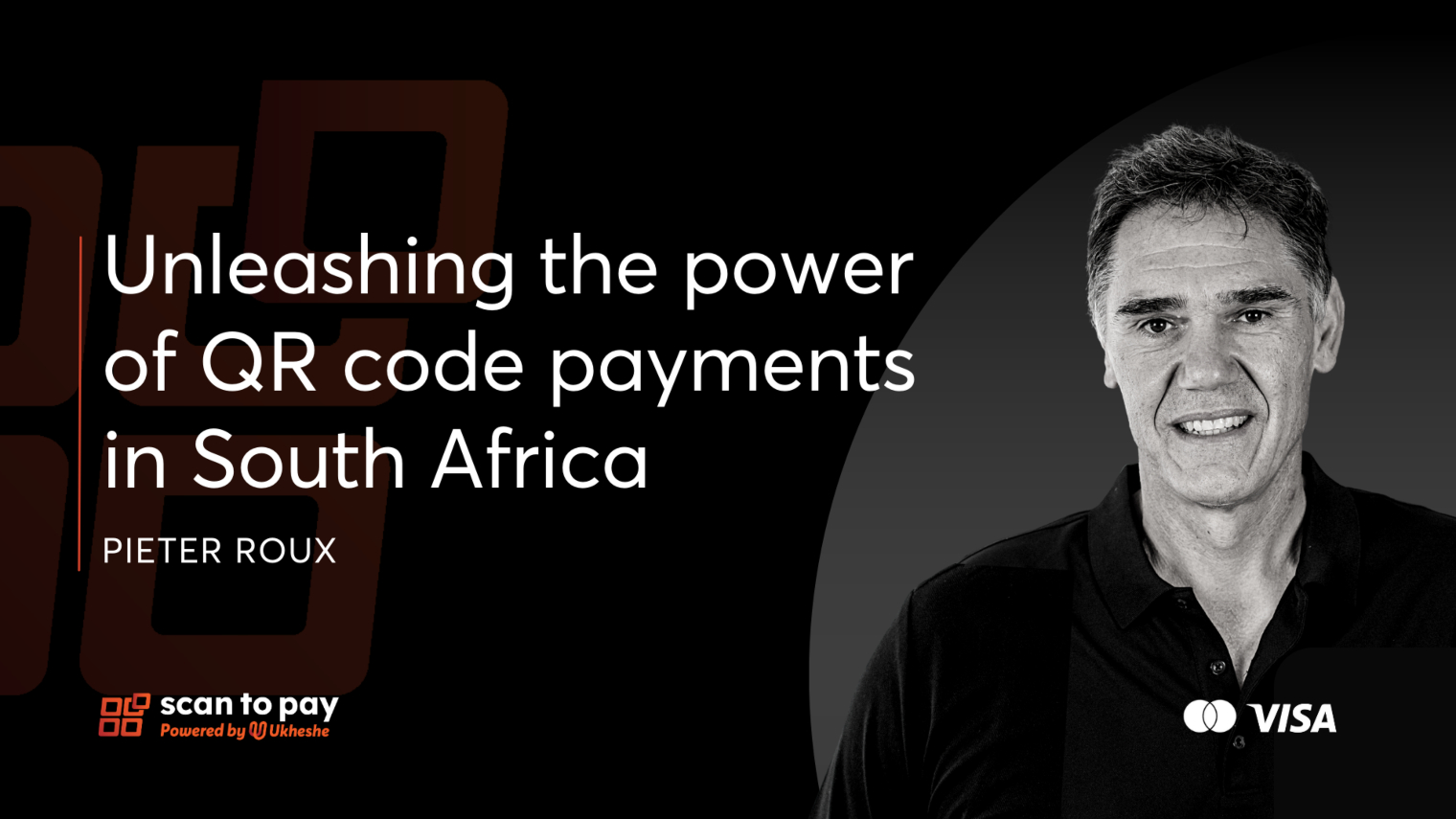
The QR code payment industry has seen a surge in adoption in recent years, with estimates suggesting a global market value of USD$9.98 billion in 2022. QR codes are seeing a marked increase in popularity in South Africa as well, says Pieter Roux, President Payment Strategy at Ukheshe.
From the brand evolution of Masterpass to Scan to Pay, Powered by Ukheshe, our Scan to Pay data shows a growing demand for mobile payments as more consumers use their mobile devices – from entry-level devices to high-end smartphones – for payments with an average of 12 million transactions per month.
QR codes are a powerful method of digital enablement as they work on almost any mobile handset with a camera which allows almost anyone to scan a QR code. However, what makes Ukheshe’s Scan to Pay so unique is that it has a built-in USSD element thanks to the 10-digit number clearly visible at the bottom of the QR code. USSD or Unstructured Supplementary Service Data, will be a familiar feature for many South Africans who are accustomed to dialling a number that starts * and ends with #. With such a low barrier to entry, USSD is one of the best methods of delivering mobile financial services at a much larger scale, particularly for low-income customers, making it a powerful tool for financial inclusion.
There are also massive benefits for businesses as well. It’s relatively cheap and easy to present a QR code as a payment option, whether on a merchant website, e-commerce checkout, or face to face. This makes QR superior to other digital payment options, usually only available online and in specific contexts. With a scope for broader acceptance points, businesses can accept online e-commerce payments or directly at a retailer, while consumers enjoy the benefit of more choices, including via their own banking app.
In the digital payments landscape, security is understandably top of mind for merchants and consumers alike. One of the biggest advantages of Ukheshe’s Scan to Pay QR is its compatibility with bank applications. The overall trustworthiness of banking apps, combined with the inherent safety features of QR code transactions, solidifies the protective framework of the process. When a transaction occurs through a Scan to Pay app, a host of security protocols are enacted, including cross-verifying the origin of the phone number against the card number entered by a customer, among others.
As a unique, simple and secure technology, perhaps the most exciting aspect of QR codes is the variety of possibilities and industry-specific use cases. From street vendors, micro-businesses, and restaurants to large supermarkets, petrol stations and national service providers, QR payment possibilities extend beyond everyday purchases to easy payment for utilities, fines, and taxes. As QR becomes more convenient, cheaper, more prevalent, and ultimately, the preferred way to trade, the perceived benefits of cash will be outweighed by the disadvantages. QR sidesteps the challenges and costs associated with travelling to find ATMs and the ever-present risk of theft when cash is withdrawn. Because these circumstances affect low-income earners the most, QR is a powerful answer to breaking down barriers to full economic participation and financial inclusion.
Ukheshe’s Scan to Pay is the largest QR ecosystem in South Africa and as such is tried and tested by millions of merchants and consumers. In fact, it is the QR payment platform of choice of more than 500 000 vendors, 14 banks and fintech companies and 94 payment service providers as well as six acquirers.
Scan to Pay QR payment is available in all major banking apps in South Africa, additionally, the Scan to Pay app can be downloaded onto most mobile devices.
